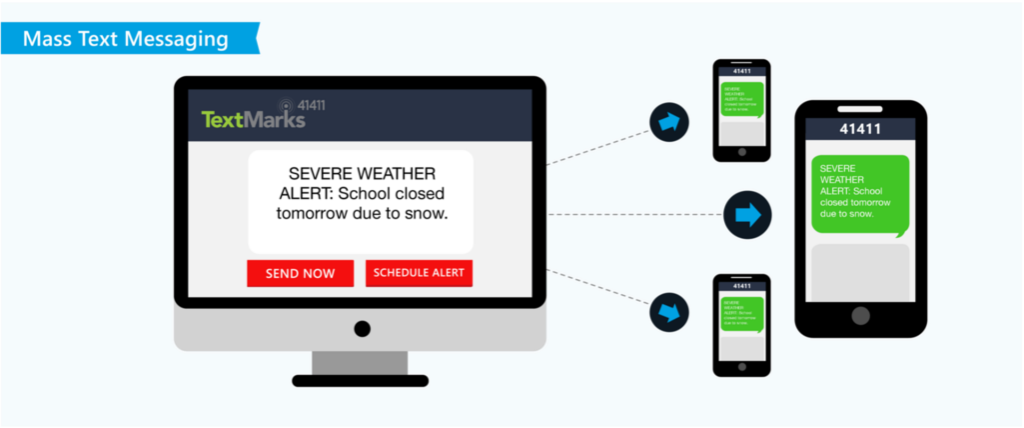Is Mass Texting Included in Your School Communication Strategy?

The new school year has arrived and as a school administrator, effective communication to parents, staff and the local community should be one of your priorities.
Your school communication strategy should include key messages you want to convey during the year, your target audience, the frequency of your communications, and how you plan to deliver your message.
School Communication Preferences
In a recent survey conducted by the Speak Up Research Project, parents were asked how they preferred to receive communication from their child’s school. Parents wanted to learn how they could bridge the gap between school and home using technology and apps at home. They also wanted to understand how to connect with teachers in order to make their child’s experience at school better. Parents preferred to have this information along with all other school reminders and event updates, sent directly to them instead having to find it themselves on the school website or on social media.
Pretty much everyone has a phone, so reaching them directly on their mobile device should be a key part of your strategy. According to the survey, 95% of parents had a smart phone, regardless of income level. But only 69% said they used Facebook often and only 16% thought Facebook was an effective communication tool. Instead, parents preferred email and text messaging as the primary method of school communication.
Mass Texting for Schools
Mass texting is a school communication channel that can keep everyone informed quickly, especially when the subjects are time sensitive. There are a number ways K-12 schools can use texting to improve school communications, and mass texting in particular has several benefits:
- Mass texting from a short code like 41411 means all phone numbers are anonymous. Texts do not show any other cell phone numbers, including that of the administrator or teacher. Privacy is important, so make sure the communication tool you use keeps everyone’s number hidden.
- No need to to manage phone number lists. Parents can opt-in to receive text messages from the school and opt-out when their child leaves the school or when they simply would rather receive messages elsewhere. No more updating phone numbers, which saves a lot of time.
- No group chat chaos. Mass text messaging from SMS services like TextMarks are primarily one-way broadcast communication tools. Without the ability to reply-all, recipients don’t get inundated with replies from random phone numbers.
- Environmentally friendly. Moving to a truly paperless environment at school will take time, but administrators can make some headway by replacing paper flyers and reminders by text whenever possible.
- Effective for time-sensitive matters. School closure alerts due to severe weather, or other campus safety issues requires a way to reach everyone right away to keep the community safe. Email and social media don’t carry the same sense of urgency as a text.
- Short and sweet. The lengthy newsletters you are putting out? 80% of people spend 30 seconds reading what you send home – and even then they aren’t reading everything. Texting helps get your main message out fast and lets people click to read more when they are ready.
Have a great school year and whatever you decide to use as school communication tool, remember personal, face-to-face communication is always best to build relationships with parents and the community. Texting, email and social media all help distribute information, but an open door helps establish trust.
Interested in learning more about bulk text messaging for schools? Contact us here or call 800-696-1393.
















